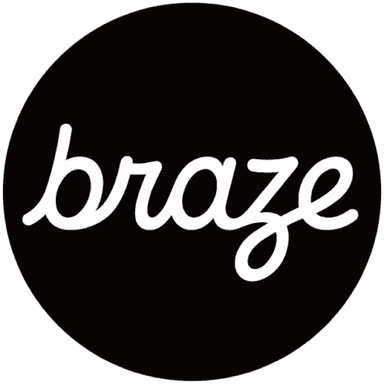Upgrade your SMS marketing game with Braze RCS
Published on August 01, 2025/Last edited on August 01, 2025/10 min read
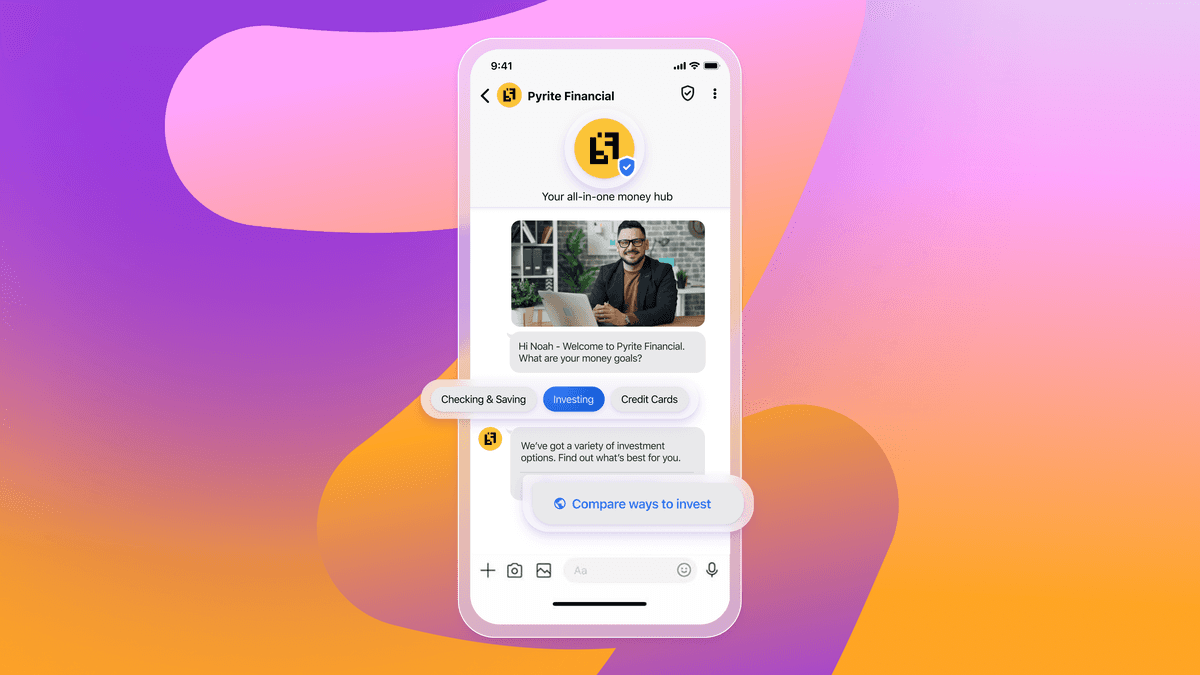

Lexie Haggerty
Senior Product Marketing Manager, BrazeAs a product marketer at Braze and a self-proclaimed online shopping addict, I receive my fair share of SMS marketing messages—allowing me to witness the good, the bad, and the ugly. However, I recently received a payment reminder from a media company via my native messaging app that truly stood out. The brand’s logo was prominently displayed at the top of the thread; without that visual cue, I might have overlooked it. The message didn’t just contain the typical “$110.54 is scheduled for 7/1/25” text. It also included a suggested action to “View bill details” and a convenient “Explain my bill” suggested reply. When I tapped it, I received a brief explanation for why my bill was $0.95 higher than last month. In less than 30 seconds, I set my phone down with a more positive impression of the brand, feeling satisfied with the added trust, convenience, and richness of the interaction.
This is the power of RCS—the next-generation mobile messaging channel that combines the benefits of SMS with a richer, more interactive experience. With over 1+ billion monthly active users, RCS for Business—now natively supported by Braze—opens up new opportunities for brands to create more immersive interactions with high-value customers.
If you’re currently sending SMS messages, you might be wondering what it takes to upgrade to RCS. Read on for four tactical steps to uplevel your SMS program and build a top-tier marketing strategy with Braze RCS.
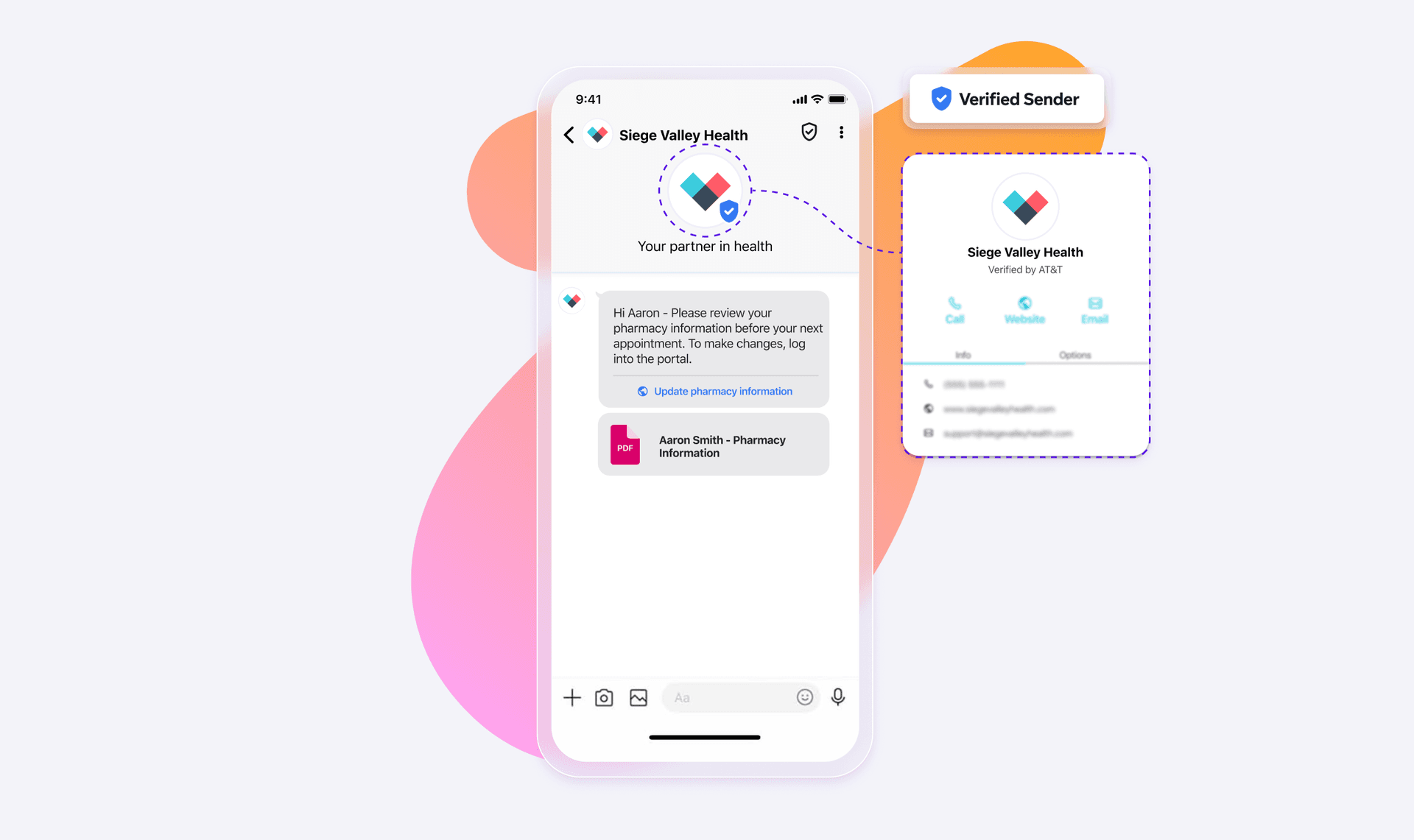
Step 1: Set up the RCS channel
Setting up the RCS channel requires some upfront work, similar to the SMS channel. However, once it’s complete, you’re ready to hit the ground running.
While SMS requires a sending phone number and has associated registration processes depending on the type of number you choose, RCS messages are sent through an RCS verified sender, which also requires a registration process. This involves providing the carriers with basic information about your brand, outlining how you plan to use the channel and which use cases you’ll be carrying out, and designating a point of contact at your company to receive a pin for business verification.
But this process isn’t all paperwork. It’s also where you establish your RCS branding by submitting your brand logo, a description of how consumers can expect you to use the channel, and a banner and brand color for the contact information page. Importantly, the verification process allows carriers to vet your brand, reinforcing its legitimacy and enabling you to display a blue shield at the top of the RCS message thread to enhance customer trust.
Once the registration process is complete, there are a few more steps to take. Since RCS is still an emerging channel and not yet as ubiquitous as SMS, setting up SMS fallback is highly recommended to maximize deliverability and reach your entire desired audience. SMS fallback sends your messages as SMS when RCS isn’t available, either because the carrier doesn’t support RCS yet or it isn’t enabled on a user’s device.
Next, you’ll need customers to send messages to. If you already have an SMS subscriber list, you can seamlessly send RCS messages to customers who are subscribed to SMS and leverage ready-to-use list growth tools to continue expanding your audience.
You might be wondering, “What if I don’t want to send all my messages as RCS?” That’s perfectly fine. You can and should take your time transitioning your SMS campaigns to RCS to ensure you’re fully leveraging the channel’s richer features to enhance your existing campaigns (more on that later). Look for a platform that offers flexible sending options, such as the ability to send both SMS and RCS from a single subscription group and, ideally, to A/B test an SMS variant against an RCS variant within a single campaign. Working at your preferred pace ultimately leads to a more thoughtfully developed RCS program, so don’t rush it.
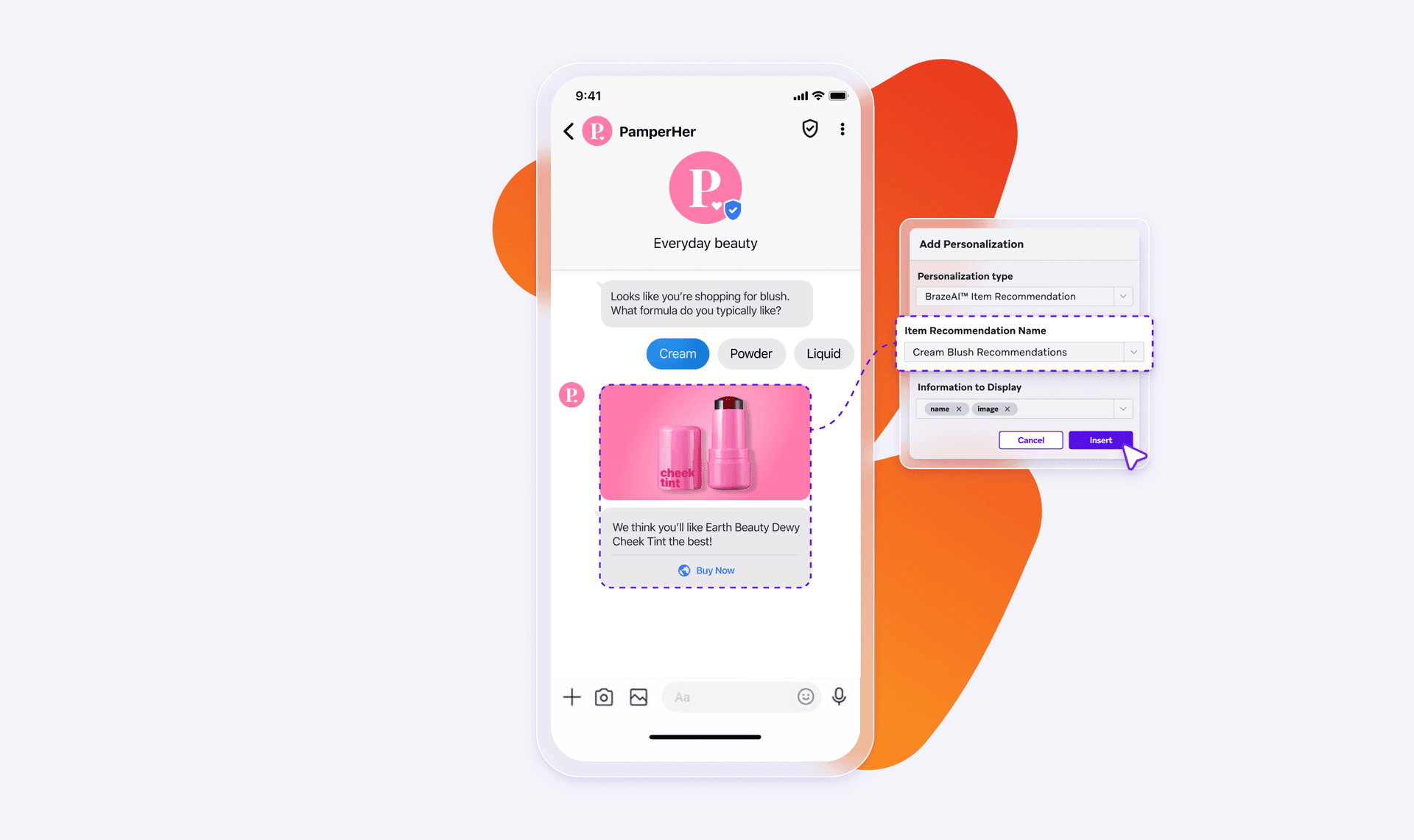
Step 2: Start transitioning your SMS campaigns to RCS
This step involves two core aspects: The tactical process of upgrading your campaigns and user journeys, and evaluating each campaign or user journey from a strategic perspective to see how RCS’s richer features could boost engagement. Let’s break down each aspect.
When upgrading your campaigns and user journeys, having a clear plan is essential. This could involve a complete audit of all your always-on SMS campaigns or a more lightweight approach that starts with testing a few one-time sends. The key is to collaborate with your team on your end goal and break it down into manageable pieces. Here are some tips:
- Start by sending a few of your scheduled or one-time campaigns as RCS. This will help you become familiar with setting up RCS messages and build confidence before updating your always-on campaigns.
- Organize your audit based on message types. This could be by use cases, campaign tags, or any other way you currently categorize your campaigns. Tackle them in sections to keep the workload impacts under control.
- Begin with your simplest campaigns and gradually move on to more complex, sophisticated use cases. For example, update your transactional SMS first, as most will likely convert to text-only RCS. Then, progress to campaigns with rich media, and finally, two-way SMS campaigns or those that are part of more intricate user journeys. As your campaigns become more advanced, so will your understanding of the RCS channel.
The other major component of updating your SMS campaigns is identifying ways to enhance them now that you can add richer content with RCS, like more rich media options and interactive features. Here are some tips for optimizing your RCS campaign content:
- Upgrade your CTAs. If you’re currently using shortened links in your SMS messages, now is the time to convert those into suggested actions. Not only do these enhance the visual appeal of your messages, but they also convey legitimacy and add professional polish, leading to more clicks and fewer instances of your messages being perceived as spam.
- Consider replacing images with other rich media options like GIFs, videos, or even audio. For instance, your welcome message featuring a generic celebratory image could be transformed into a video message that showcases your brand’s value propositions or walks through your product. Or, a win-back campaign could be elevated with an audio message expressing that your brand misses the customer. The possibilities are nearly endless, so take the time to evaluate your MMS campaigns.
- Add utility to transactional messages with documents. While documents may not seem like the most exciting rich media option, they can provide significant convenience for your customers. Consider sending bills or hotel folios via RCS messages. Your customers will appreciate not having to sift through their email.
- Revisit personalization. If you’re reading this article, your SMS messages are likely already personalized. Now is the time to take your personalization to the next level. Consider using BrazeAI™ to transform your messages into 1:1 RCS messages tailored to each user, each with unique content, products, and more.
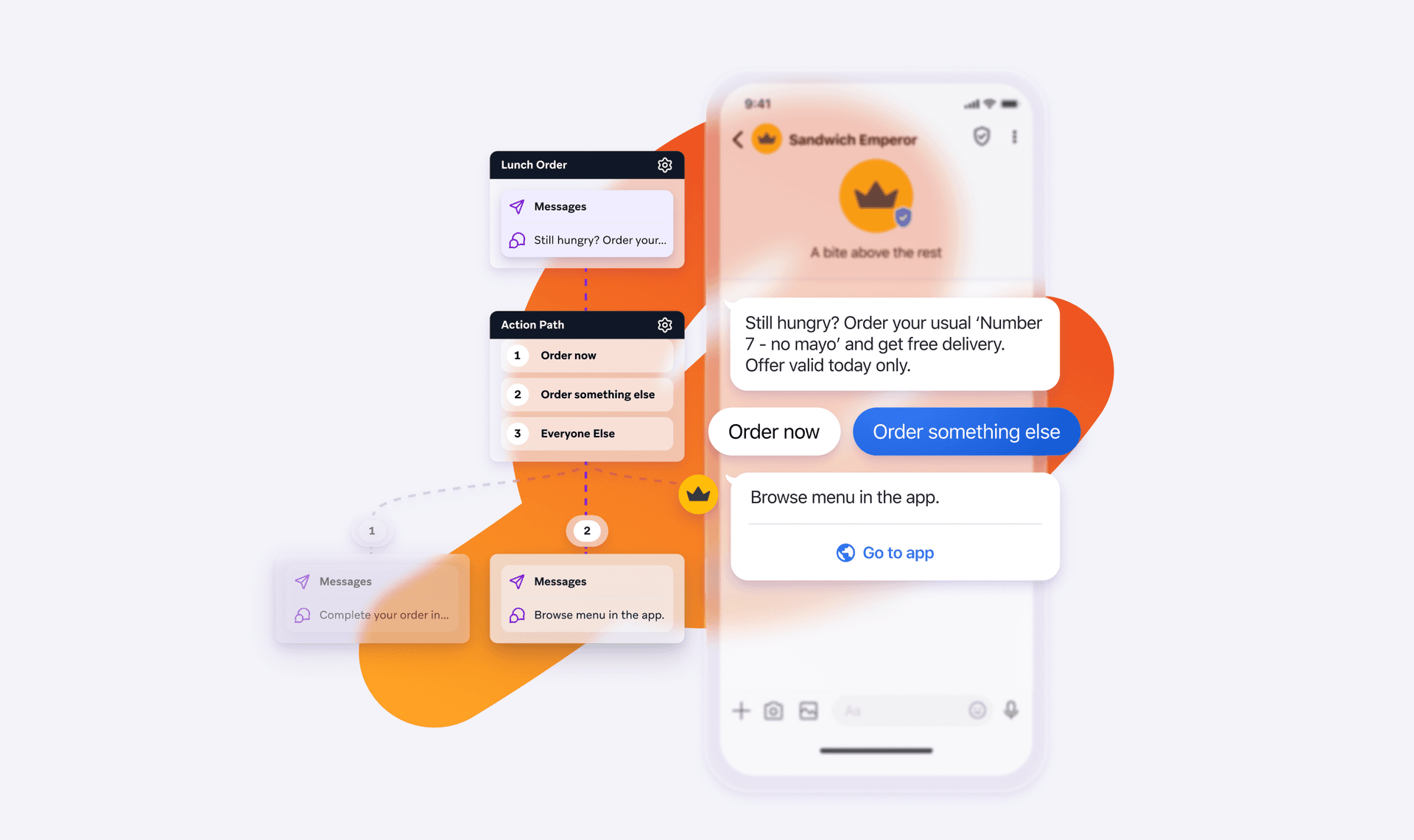
Step 3: Orchestrate guided, interactive experiences in real time
In 2025, personalized one-way messaging won’t be enough to make your brand stand out—it’s what consumers expect. To truly differentiate yourself, you need to engage in a dialogue with your customers.
With RCS, you can guide your customers toward their next high-value action, collect user preferences, and have richer conversations through easy-to-tap, personalized suggested actions and replies. Here’s what to do:
- Look for a platform that simplifies orchestrating two-way journeys. RCS is designed for two-way communication, featuring suggested replies, but you need a platform that allows you to process those replies in real time and respond based on their selections. Braze makes it easy to build and visualize two-way conversations with our intuitive journey builder tool, Canvas. Using Canvas, you can instantly process and respond to inbound replies and messages from customers.
- Start by transitioning any two-way SMS campaigns you already have running. For example, if you have a post-purchase feedback campaign that asks customers to rate their experience from 1 to 5, you can increase responses by converting those selections into suggested replies that customers can easily tap instead.
- Explore new ways to interact with your customers. You likely have campaigns that were previously limited to one-way SMS because you didn’t have the option for two-way communication. Look for opportunities to ask customers about their preferences to make even better product or content recommendations, guide them through a multi-step onboarding process with suggested replies and actions, and use these interactions to gather valuable first-party data for future personalization on RCS or other channels.
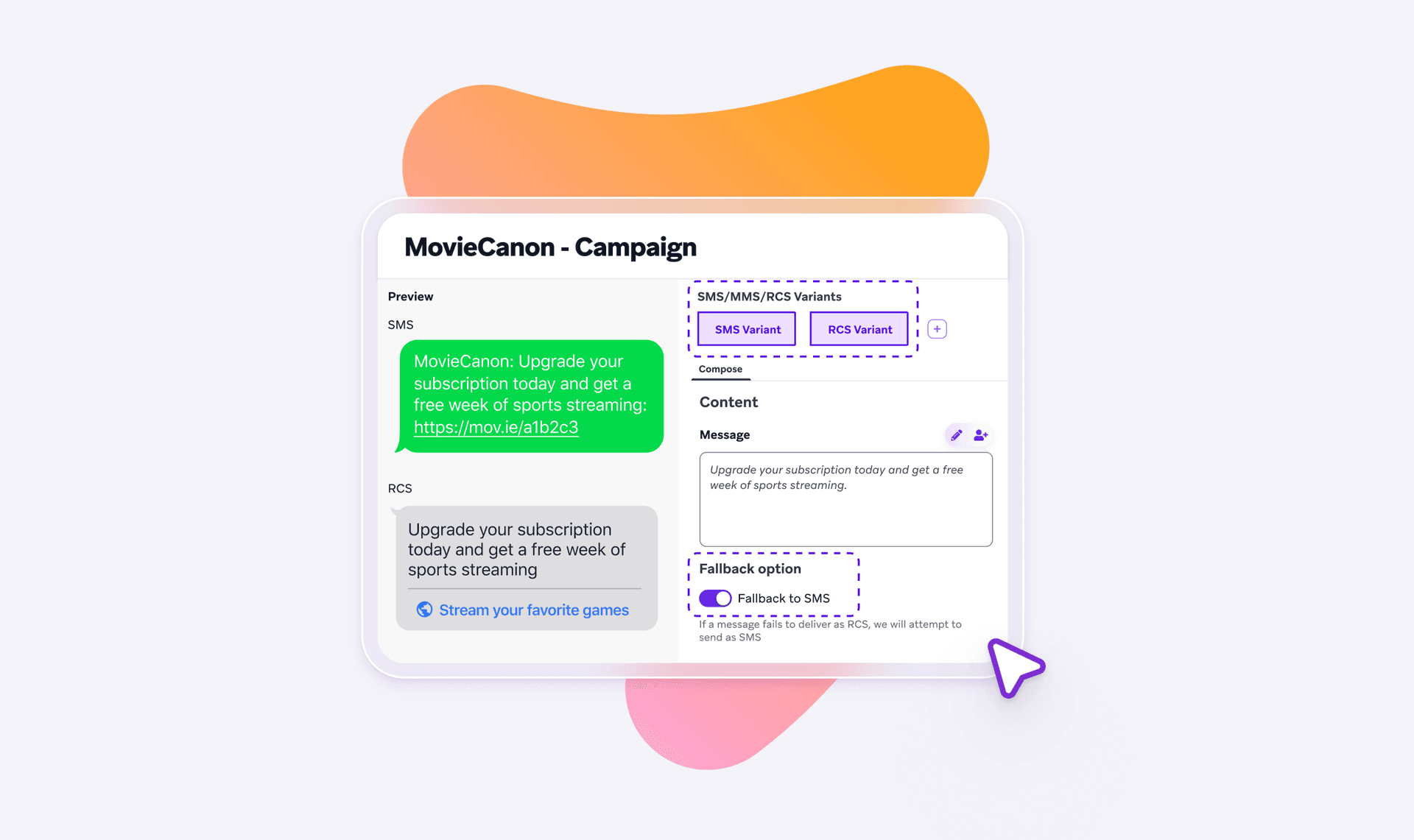
Step 4: Measure your results
The final step in upgrading your SMS to RCS is to measure the results of your efforts. Once you’ve begun sending RCS campaigns, it’s time to evaluate your RCS campaign performance. Here are some specific pointers:
- A/B test your RCS campaigns with both SMS and RCS variants. However, this doesn’t mean you need a 50/50 split. If you’re seeing positive results with the RCS channel, consider allocating a smaller percentage of messages to SMS—or better yet, utilize advanced AI features like Braze Winning Variant to send the variant that performs best.
- Monitor your read rates. One of the major advantages of RCS is that it provides read rate metrics, which were unavailable with SMS. Make it a habit to track and report on this key new metric.
- Evaluate the performance of your overall RCS program vs. your SMS program. Don’t just look at individual campaigns. Take a bird’s-eye view to see how the overall channel is impacting your key KPIs, conversion rates, and revenue.
Final thoughts
Upgrading your SMS marketing to RCS offers a powerful opportunity to enhance customer engagement through richer, more interactive experiences. By following these four tactical steps, you can effectively leverage the unique features of RCS to build more immersive experiences for your customers. As RCS continues to grow in popularity, taking the time to implement these strategies will allow your brand to stand out against your competitors.
Want to learn more about elevating your customer interactions with RCS? Connect with Braze to learn more about Braze RCS and what they can make possible for your brand.
Forward-looking statements
This blog post contains “forward-looking statements” within the meaning of the “safe harbor” provisions of the Private Securities Litigation Reform Act of 1995, including but not limited to, statements regarding the performance of and expected benefits from Braze and its products and features. These forward-looking statements are based on the current assumptions, expectations and beliefs of Braze, and are subject to substantial risks, uncertainties and changes in circumstances that may cause actual results, performance or achievements to be materially different from any future results, performance or achievements expressed or implied by the forward-looking statements. Further information on potential factors that could affect Braze results are included in the Braze Annual Report on Form 10-Q for the fiscal quarter ended April 30, 2025, filed with the U.S. Securities and Exchange Commission on June 6, 2025, and the other public filings of Braze with the U.S. Securities and Exchange Commission. The forward-looking statements included in this blog post represent the views of Braze only as of the date of this blog post, and Braze assumes no obligation, and does not intend to update these forward-looking statements, except as required by law.
Related Tags
Be Absolutely Engaging.™
Sign up for regular updates from Braze.
Related Content
View the Blog
A day in the life of a data scientist on the BrazeAIᵀᴹ forward-deployed engineering team

McKay Jensen

The new inbox reality: How iOS changes are reshaping email marketing

Aparna Prasad

Experience optimization: Turning data insights into better journeys
